mercredi, 20 décembre, 2017
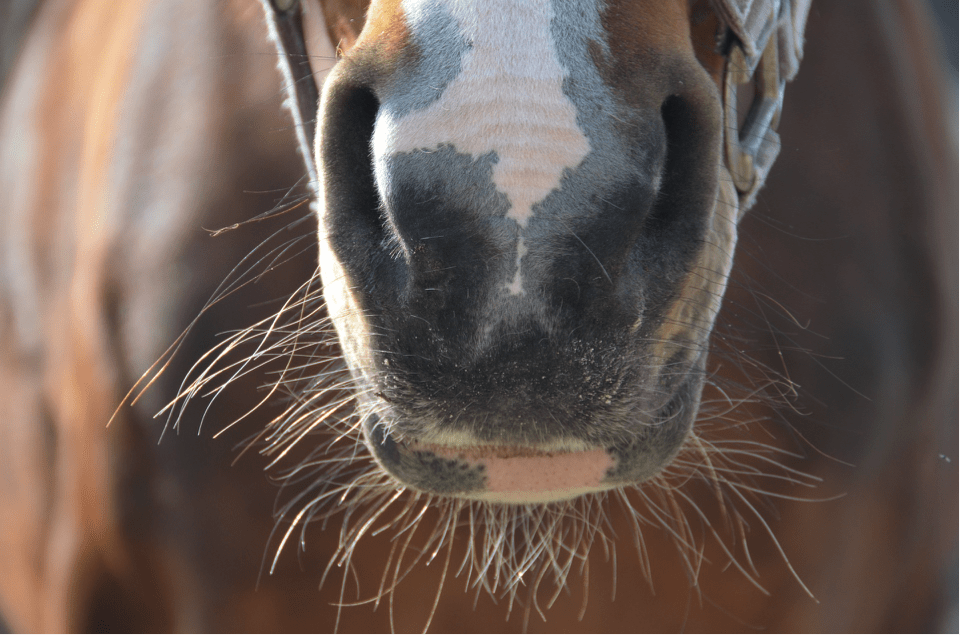
Le système respiratoire équin (et humain) est composé de : la bouche, les naseaux, la cavité nasale, le sinus frontal, le pharynx, le larynx, la trachée, les poumons, les bronches, les bronchioles, le diaphragme, les côtes et les muscles intercostaux. Comme les chevaux ne respirent que par leur nez, les naseaux sont la principale entrée/sortie des voies aériennes. La fonction première de l’appareil respiratoire du cheval, en particulier pendant l’entrainement, est d’assurer l’échange de gaz : il fournit l’oxygène au sang, élimine le dioxyde de carbone du corps, et participe à la thermorégulation et au maintien de l’équilibre acido-basique.
Il est important de connaître les signaux vitaux normaux (ou TPR : température, pouls et fréquence respiratoire) de votre cheval, qui donneront des indications précieuses sur sa santé. Vous pouvez mesurer la fréquence respiratoire en sentant l’air entrer et sortir des naseaux de votre cheval, ou en observant/sentant le mouvement du poitrail ou des flancs de votre cheval sur une minute. Ecouter la respiration avec un stéthoscope placé sur la trachée est encore mieux. Un battement correspond à un cycle respiratoire : une inspiration + une expiration. La fréquence respiratoire normale moyenne pour un cheval adulte est compris entre 10 et 20 cycles par minute. Pour un poulain nouveau né il sera plus élevé; environ 20 à 40.
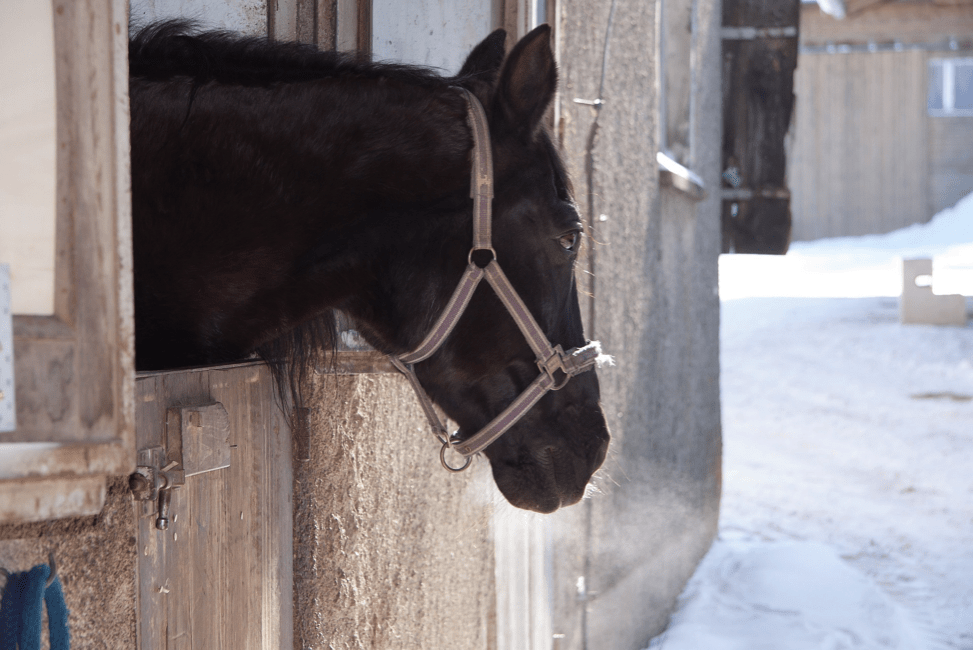
Bien sûr, ce sont des chiffres généraux qui vont varier selon les chevaux et la situation. L’environnement ainsi que le stress ou l’excitation, peuvent avoir un impact sur la fréquence respiratoire. Si le cheval est particulièrement décontracté, vous pouvez même obtenir une fréquence aussi basse que 4 cycles par minute. Vérifier ces signes régulièrement vous aidera à définir les valeurs normales pour votre cheval.
En plus de la fréquence, il peut s’avérer utile de porter attention aux caractéristiques de la respiration qui sont également des bons indicateurs ; est-ce que votre cheval fait des sons inhabituels en respirant, est-ce que la respiration est profonde ou haletante… ? Des bruits étranges peuvent par exemple indiquer des allergies, un emphysème pulmonaire, ou une obstruction de mucus dans la trachée par exemple.
Comme la fréquence cardiaque, la fréquence respiratoire va augmenter avec l’entrainement, presque linéairement avec l’intensité. Elle peut monter jusqu’à 180 cycles par minute lors d’exercices très intenses. Le système respiratoire va répondre à la stimulation de l’entrainement en dilatant les voies respiratoires du cheval, ce qui va réduire leur résistance et donc augmenter le débit d’air. Les muscles des voies aériennes supérieures vont permettre une plus grande entrée d’oxygène dans le système du cheval, et aider à mieux éliminer le dioxyde de carbone, dont la production va aussi s’amplifier avec l’effort. La fréquence respiratoire et la fréquence de contraction des poumons vont aussi augmenter pour respectivement gérer l’accumulation de dioxyde de carbone et permettre plus de transferts d’air.
La période de récupération de la fréquence respiratoire peut aussi être utilisée comme indicateur de fitness, même s’il est déconseillé de l’utiliser seule comme elle est très variable. La fréquence ainsi que le son de la respiration sont utiles pour l’évaluer. Selon l’entrainement, le temps normal de récupération (c.à.d. le temps que va prendre la fréquence respiratoire pour retourner à des valeurs normales) est de 15 à 20 minutes. La respiration rapide et lourde du cheval va baisser et les naseaux dilatés vont retourner à la normale.
Plus la respiration de votre cheval va chuter rapidement après l’effort, plus il sera en forme. C’est particulièrement important à noter pour les chevaux de sports qui se préparent pour la saison de concours. Par exemple, on peut considérer qu’un cheval de complet qui retrouve un rythme respiratoire normal 3-4 minutes après avoir effectué un parcours de cross n’aura pas besoin de plus de préparation. [Au passage, si vous souhaitez en apprendre plus sur la préparation physique du cheval pour la saison de concours, allez lire notre article écrit avec la double championne d’Europe jeunes cavaliers Marie-Charlotte Fuss.]
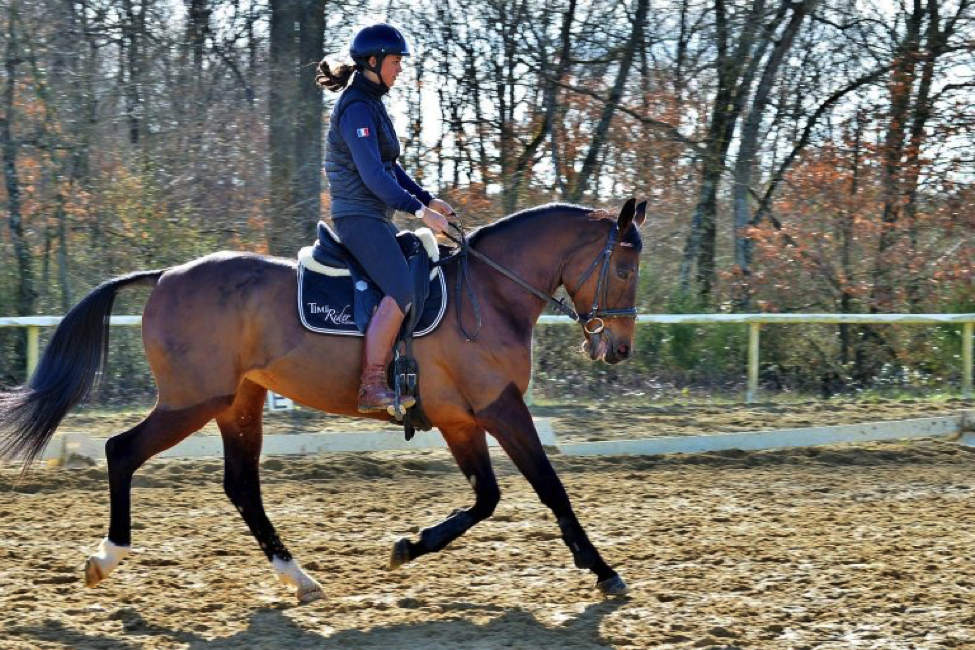
Un cheval haletant, avec un souffle court et rapide après l’effort a peut être été surentrainé et/ou est peut être en surchauffe. Si la période de récupération est longue et que le cheval respire toujours difficilement après 5 minutes de pas au calme par exemple, il vaut mieux ne plus lui demander d’efforts trop intenses pendant quelques jours. Enfin, tout bruit anormal ou écoulement nasal peut indiquer un problème qui doit être adressé.
Plusieurs facteurs limitent l’efficacité du système respiratoire comme le volume des poumons, le diamètre des voies respiratoires, et les allures du cheval. En effet, contrairement au pas et au trot, où la fréquence respiratoire va s’adapter à la demande en oxygène des organes du cheval, au galop elle va être exactement couplée à la fréquence des foulées. Ainsi, la seule façon d’augmenter le rythme respiratoire pour mieux répondre aux besoins en oxygène, sera d’augmenter l’allure, ce qui va fatiguer le cheval et davantage augmenter la demande en oxygène. Lors d’efforts longs et intenses, le cheval va donc nécessairement manquer d’oxygène et présenter une hypoxémie (1) et hypercapnie (2).
En ce qui concerne le volume des poumons, les chevaux ont beau avoir une capacité pulmonaire de 50L d’air, 60% de l’air respiré ne participe pas à l’échange gazeux, rendant cette large capacité plutôt inutile. De plus, les chevaux respirent par leurs naseaux, une des parties les plus étroites du système respiratoire avec le larynx. Cela entraîne de la résistance, qui va limiter l’air inspiré pendant l’effort, malgré la dilatation des naseaux et du larynx.
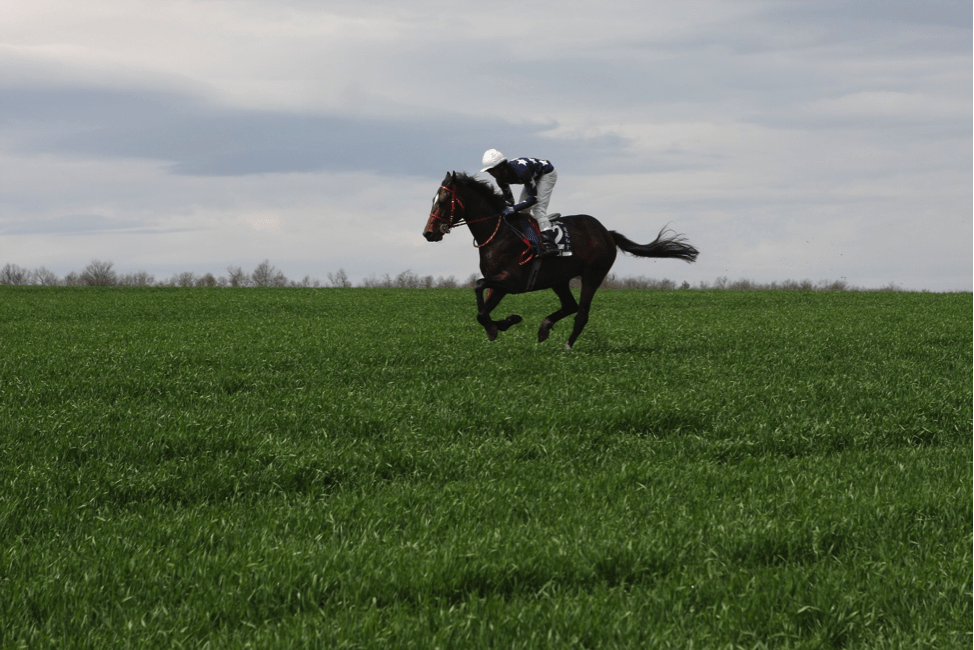
L’entraînement n’aura pas de réel effet sur le système respiratoire, comparé aux systèmes musculaire ou cardiovasculaire. En effet, c’est l’adaptation de ces deux derniers systèmes qui va par exemple entrainer une augmentation de l’absorption d’oxygène, et une diminution de la fatigue respiratoire. On ne pourra pas augmenter la capacité de ventilation des poumons ou la vitesse d’échange des gaz (oxygène et dioxyde de carbone) ; facteurs déterminants de la capacité d’exercice.
La seule amélioration qui peut se produire avec de l’entrainement est le renforcement des muscles des voies aériennes supérieures (naseaux, pharynx, larynx), mais il n’y aura pas de réel changement du système respiratoire. En effet, des recherches ont montré que l’entrainement a peu d’effet sur les voies respiratoires inférieures, et conclu que le système respiratoire du cheval n’est pas bien adapté aux demandes du cheval de sport.
D’autres facteurs vont affecter l’entrée d’air et l’échange de gaz pendant l’effort, limitant ainsi la performance maximale du cheval, comme par exemple la qualité de l’air (pollution, humidité…), la position de la tête et du cou du cheval, et l’équipement utilisé. Ces facteurs sont plus faciles à prendre en compte pour les cavaliers, qui peuvent alors essayer de limiter l’impact sur la respiration de leurs chevaux.
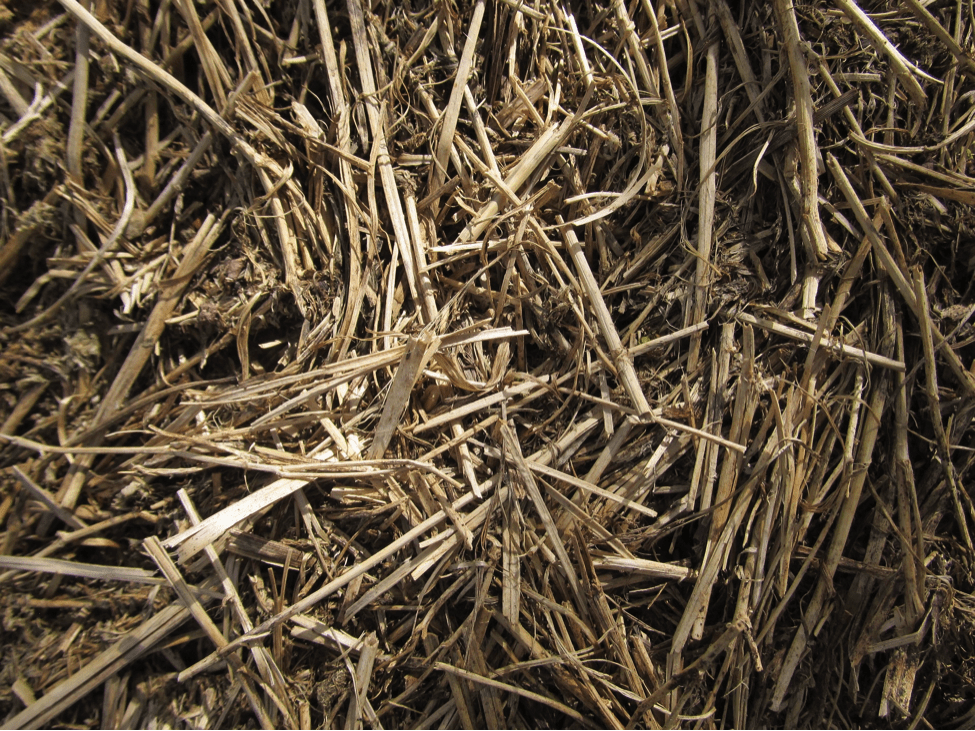
Il y a plusieurs méthodes de gestion d’une écurie qui peuvent prévenir et limiter les facteurs de risque pour la santé respiratoire équine, qui sont nombreux et incluent autant la santé générale du cheval que les facteurs environnementaux et même les facteurs nutritionnels.
-> Il est important de maintenir une bonne qualité d’air dans l’écurie avec un bon système de ventilation, et de donner aux chevaux le plus de temps possible à l’extérieur
-> Pour réduire la poussière et la pollution, il est conseillé d’utiliser des brouettes, de limiter l’utilisation de machines dans les écuries et manèges/carrières, et minimiser toute activité humaine (balayer, herser, etc.) surtout quand des chevaux sont présents
-> Pour garder les zones d’entrainements peu poussiéreuses, il est souvent nécessaire d’arroser
-> Une litière de qualité et sans poussière est à privilégier pour assurer la bonne sante du système respiratoire des chevaux
-> Mouiller le foin, et ne pas nourrir les chevaux au sol réduira également leur inhalation de poussière
-> Enfin, pour prévenir les maladies, désinfecter les seaux d’eau et de granulés est une bonne habitude à prendre, ainsi qu’avoir un programme de vaccination complet et adapté à chaque cheval
A très vite pour un nouvel article,
La team Seaver